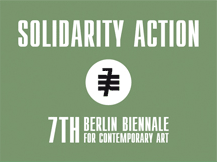For about twenty years I have been running institutions that are very different from each other, while witnessing the incredible transformation of contemporary art. While at the start we were outside the international scene (except for rare exceptions to the rule, like the Venice Biennial), today we have a widespread network in the territory, where the question of local character is central due to both culture and history. The thousands of situations – very active and highly professional – represented by the many associations, foundations and spontaneous projects of artists, as well as museums, have allowed a context that was short of institutions, from an international viewpoint, to create a true network of local and international relations, which have led to the growth of contemporary art in Italy, as it comes to grips today with international realities. This is why we need to begin some precise reasoning on the outlook of the institutions, taking limits and objectives into consideration. In this area, the theme of collecting is a central one. In Italy the legacy of collectors is decidedly more important than that of most contemporary art museums. Collectors are no longer satisfied just with being private individuals, they want to achieve a level of institutional recognition – which explains the recent extraordinary spread of foundations. Furthermore, collectors seem to call for comparison with public institutions, which run on deficits in Italy, precisely because the museums have never had a strong enough identity to allow them to establish a dialogue with private players – as happens in North America, where the relationship between private interests and museums is very strong. In Italy this dialogue is now growing, and gradually become more solid. When I reached the Macro I was faced by an extremely difficult – but also very positive – situation, that of a museum with no identity: the part designed by Odile Decq was opened only in December 2010, and since then I have had to completely rethink this institution. The priority was to open the museum to people, imagining new spaces as exhibition areas, and transforming the old museum into studios for artists, putting them at the center of our activities as part of a process that brings the audience ever closer to contemporary art. It is urgent to think about the opening and functioning of contemporary art centers, asking ourselves about the mission and the need for these institutions, their political relations and territorial marketing. It might be useful, in this area, to imagine hybrids of museums, production centers and training schools, because it no longer makes sense for these spaces to operate separately. It might be possible to activate a new economic cycle connected with education, with the possibility of production and hospitality, to imagine new alternative forms to the management of financing. The Italian situation, specifically, is very particular, if we compare it to centralized situations like German or England: we do not have a strong national identity, but fragmented, local situations. Culture is subjected to this fragmentation, multiplying the smaller, interesting realities that are responsible for the great vitality of this territory. Italy represents an extreme case of centralization and fragmentation. I have witnessed the vertical growth of contemporary art in Rome, not just due to the opening of the MAXXI and Macro museums, but also for everything that it has generated. The fabric is rapidly growing and recovering the relationship with its history, through artists like Alighiero Boetti, Gino De Domincis, Jannis Kounellis and Pino Pascali.
BARTOLOMEO PIETROMARCHI
Director of Macro since 2011.


